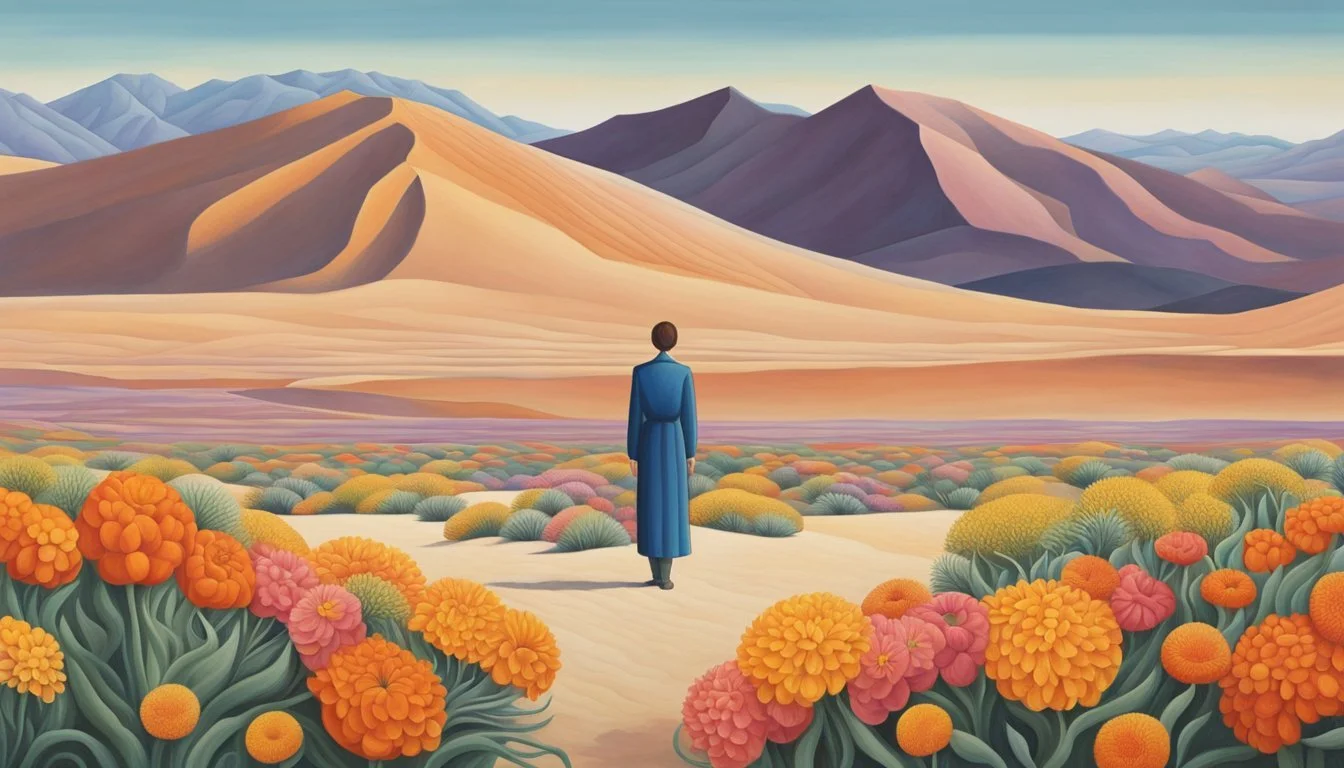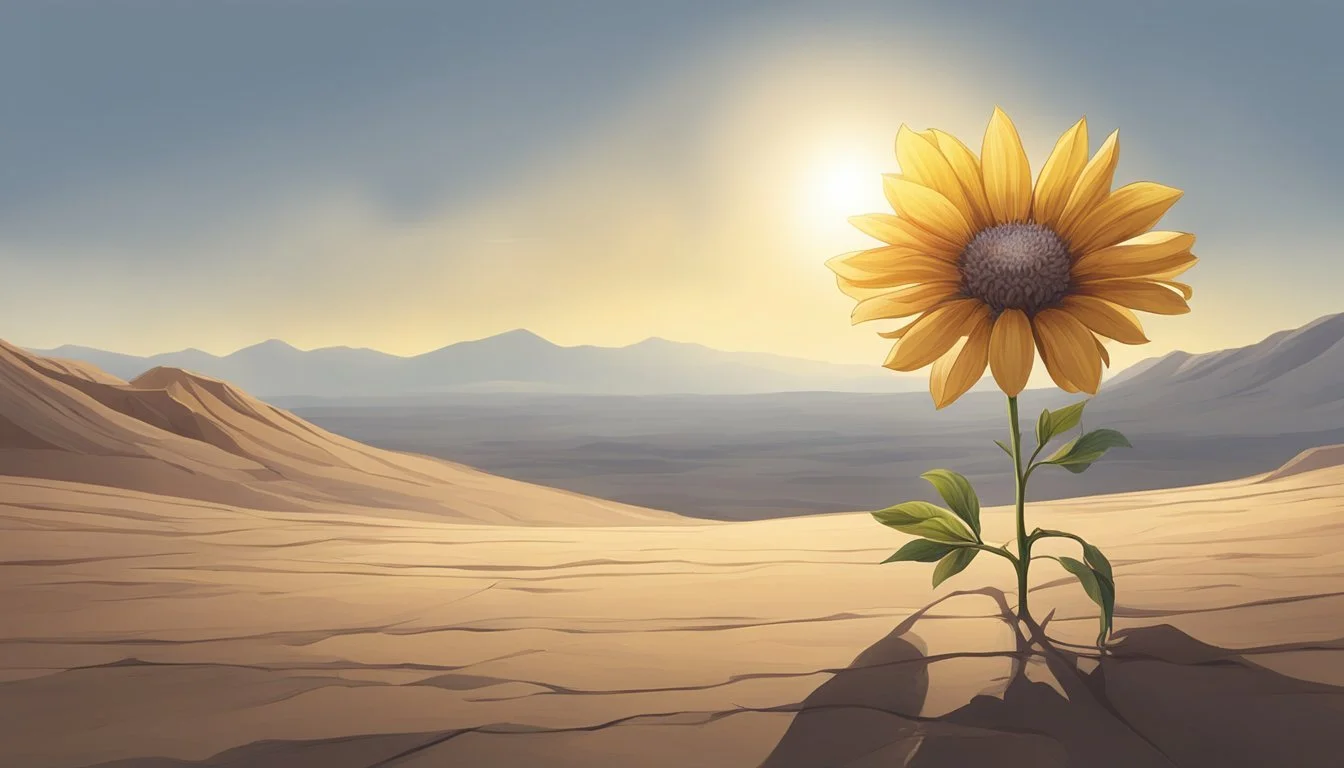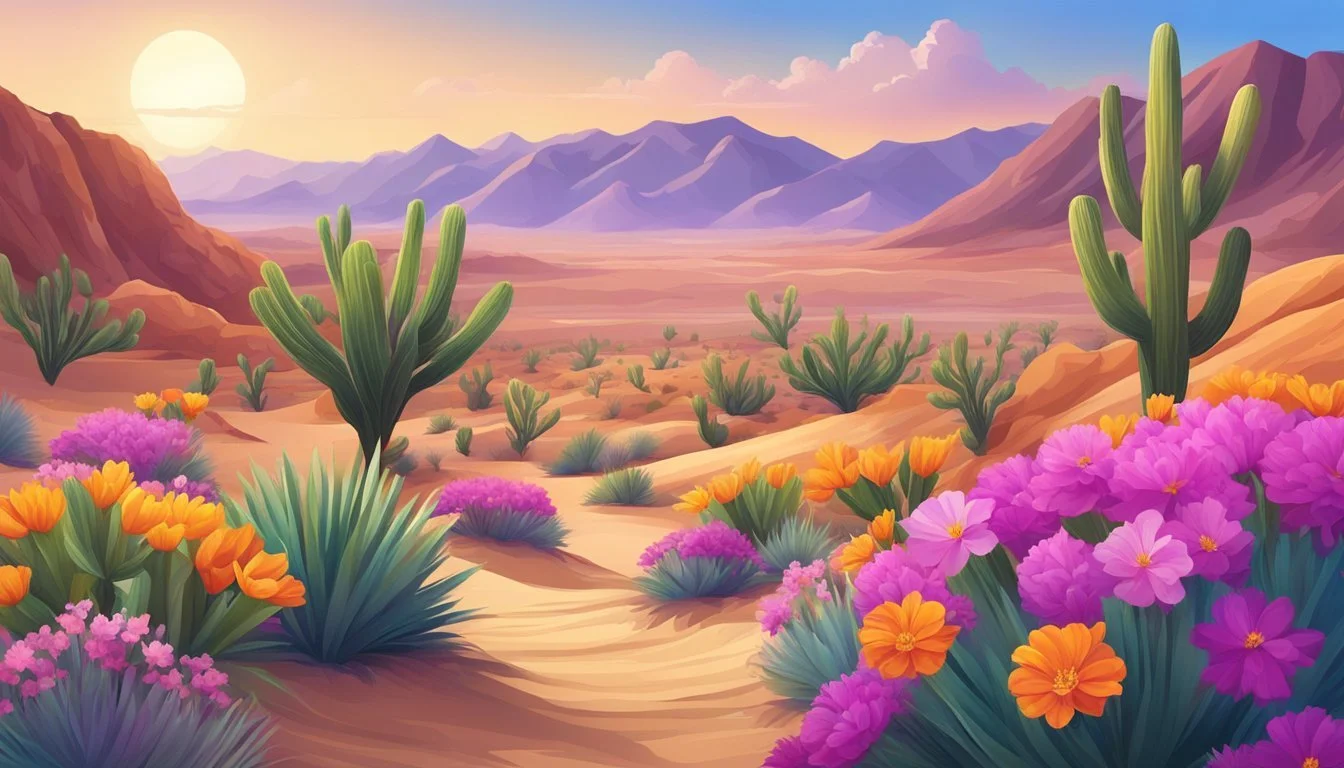Art and Adversity: Georgia O'Keeffe's Battle with Clinical Depression
Exploring the Artist's Inner Struggle
Georgia O'Keeffe, a pioneering American artist of the 20th century, left an indelible mark on the art world with her bold and unique paintings. Known for her vibrant depictions of flowers, New York skyscrapers, and New Mexico landscapes, O'Keeffe's work captivated audiences and earned her widespread recognition. Despite her artistic success, O'Keeffe grappled with clinical depression throughout her life, highlighting the complex relationship between creativity and mental health.
O'Keeffe's struggle with depression was not widely publicized during her lifetime, but it significantly impacted her personal and professional journey. The artist's experience serves as a testament to the resilience of the human spirit and the power of art as a means of self-expression and healing. Through her work, O'Keeffe found solace and a way to channel her emotions, creating masterpieces that continue to resonate with viewers today.
The Early Life of Georgia O'Keeffe
Georgia O'Keeffe's formative years laid the foundation for her groundbreaking artistic career. Her early education and exposure to diverse artistic influences shaped her unique style and approach to art.
Art Institute of Chicago and Art Students League
O'Keeffe's formal art education began at the Art Institute of Chicago in 1905. She studied traditional techniques and developed her skills in drawing and painting. Her time at the institute exposed her to a wide range of artistic styles and movements.
In 1907, O'Keeffe moved to New York City to attend the Art Students League. There, she honed her technical abilities and explored new artistic approaches. Her charcoal drawings from this period caught the attention of influential art dealer Alfred Stieglitz.
Influence of Japanese Art and American Modernist Movement
Japanese art played a significant role in shaping O'Keeffe's artistic vision. She was drawn to the simplicity and elegant lines of Japanese prints and incorporated these elements into her work.
The American Modernist movement also had a profound impact on O'Keeffe's early artistic development. She embraced the movement's emphasis on abstraction and experimentation. This influence is evident in her bold use of color and innovative compositions.
O'Keeffe's early exposure to these diverse artistic influences helped her develop a distinctive style that would later define her career as one of America's most celebrated artists.
Development of Artistic Style
Georgia O'Keeffe's artistic journey was marked by a profound evolution in style and technique. Her work transitioned from realism to modernism as she developed a unique visual language.
Realism to Modernism Transition
O'Keeffe's early works showcased a mastery of realism, with precise representations of her subjects. As she explored new artistic territories, her style began to shift towards abstraction and modernism.
This transition was influenced by her exposure to avant-garde art movements in New York City. O'Keeffe experimented with form and color, gradually moving away from literal interpretations.
Her paintings of flowers and landscapes became increasingly simplified and stylized. She focused on capturing the essence of her subjects rather than their exact appearance.
Invention of Visual Language
O'Keeffe developed a distinctive visual language characterized by bold forms and vivid colors. She often magnified natural objects, presenting them in unexpected ways.
Her iconic large-scale flower paintings exemplified this approach. By zooming in on petals and leaves, she transformed familiar subjects into abstract compositions.
O'Keeffe's use of color became more intense and expressive. She employed vibrant hues to convey emotion and capture the spirit of her subjects.
Her unique style blended elements of realism and abstraction, creating a bridge between traditional and modern art. This innovative approach cemented her position as a pioneer of American Modernism.
O'Keeffe's Creative Process
Georgia O'Keeffe's artistic approach was deeply rooted in her connection to nature and her unique interpretation of the world around her. Her creative process involved immersing herself in landscapes and translating her observations into bold, abstract forms.
Incorporating Nature and Landscapes
O'Keeffe drew inspiration from the natural world, particularly the landscapes of New Mexico and West Texas. She spent hours observing and sketching outdoors, absorbing the colors, shapes, and textures of her surroundings.
Her paintings often featured simplified forms and vibrant colors that captured the essence of the landscapes she explored. O'Keeffe's creative process involved distilling complex natural scenes into their most essential elements.
She frequently used unconventional perspectives, such as close-up views or aerial perspectives, to present familiar subjects in new and striking ways.
Interpretation of Flowers and Desert Landscapes
O'Keeffe's iconic enlarged flower paintings emerged from her desire to make people truly see and appreciate nature's intricacies. She focused on the abstract qualities of petals and blossoms, magnifying their forms to fill entire canvases.
Her interpretations of desert landscapes were equally striking. O'Keeffe captured the stark beauty of arid environments through simplified shapes and bold color contrasts.
She often incorporated elements like sun-bleached bones and weathered rocks into her compositions, emphasizing the raw, elemental qualities of desert scenes.
O'Keeffe's creative process involved long periods of observation followed by decisive, confident brushwork to translate her vision onto canvas.
Navigating Personal and Professional Relationships
Georgia O'Keeffe's artistic journey was profoundly shaped by her connections in the art world. Her relationships opened doors to new opportunities and influenced her creative development.
Encounter with Alfred Stieglitz
O'Keeffe's life changed dramatically when she met photographer Alfred Stieglitz in 1916. Stieglitz, impressed by her charcoal drawings, exhibited her work at his gallery 291 in New York City. Their professional relationship quickly evolved into a personal one.
The couple married in 1924, forming a partnership that would last until Stieglitz's death in 1946. Stieglitz's photographs of O'Keeffe became famous, contributing to her public image as an artist.
Despite the benefits of their connection, O'Keeffe sometimes struggled with being overshadowed by Stieglitz's reputation. She worked to establish her own identity separate from his influence.
Gaining Recognition in the American Art Scene
O'Keeffe's unique style and subject matter gradually gained attention in the American art world. Her large-scale flower paintings and Southwestern landscapes set her apart from her contemporaries.
By the 1920s, O'Keeffe was recognized as a leading American modernist. Her work was exhibited in major galleries and museums across the country. She became one of the highest-paid artists of her time.
O'Keeffe's success in a male-dominated field was groundbreaking. She paved the way for future generations of women artists. Her professional relationships with gallery owners, critics, and collectors played a crucial role in cementing her status in 20th-century American art.
Challenges and Achievements
Georgia O'Keeffe faced significant personal struggles while creating groundbreaking art that earned her widespread acclaim. Her journey exemplifies the interplay between adversity and artistic accomplishment.
Achieving Iconic Status amidst Adversity
O'Keeffe battled clinical depression throughout her career, yet managed to produce innovative works that captivated the art world. Her unique vision and determination allowed her to overcome periods of emotional turmoil. Despite her mental health challenges, O'Keeffe's art gained recognition for its bold use of color and form.
She pushed boundaries in a male-dominated field, becoming one of the most celebrated American artists of the 20th century. O'Keeffe's resilience in the face of personal difficulties contributed to her legendary status.
O'Keeffe's Famous Paintings and Recognition
O'Keeffe's iconic paintings include her enlarged flower series, New York skyscrapers, and New Mexico landscapes. These works garnered critical acclaim and public admiration. Her distinctive style, characterized by vibrant colors and abstract forms, set her apart from her contemporaries.
Notable achievements:
Exhibited at major museums worldwide
Received the Presidential Medal of Freedom in 1977
Awarded the National Medal of Arts in 1985
O'Keeffe's art continues to inspire and influence artists today. Her ability to create powerful, evocative images despite personal struggles solidified her place in art history. The enduring popularity of her work speaks to its timeless appeal and significance.
Impact of Adversity on Creative Expression
Georgia O'Keeffe's struggle with depression and anxiety profoundly shaped her artistic journey. Her experiences demonstrate how mental health challenges can influence creative output and serve as a catalyst for emotional healing.
Confronting Depression and Anxiety
O'Keeffe's battle with clinical depression began early in her career. The artist experienced periods of intense emotional turmoil, often leading to creative blocks and self-doubt.
These mental health challenges pushed O'Keeffe to explore new artistic techniques and subjects. Her paintings from this period reflect a raw intensity, with bold colors and abstract forms conveying her inner emotional landscape.
O'Keeffe's work during these difficult times became more introspective. She turned to nature for solace, painting enlarged flowers and stark landscapes that mirrored her psychological state.
Art as a Form of Catharsis and Mental Renewal
For O'Keeffe, painting served as a powerful therapeutic tool. The act of creating art provided an outlet for expressing complex emotions that were difficult to verbalize.
Through her artwork, O'Keeffe found a way to process her experiences with depression and anxiety. This cathartic process allowed her to transform negative emotions into visually striking and emotionally resonant pieces.
O'Keeffe's dedication to her craft during challenging times highlights the potential of art as a means of mental renewal. Her ability to channel adversity into creativity became a defining aspect of her artistic legacy.
The therapeutic potential of O'Keeffe's art extended beyond personal healing. Her works continue to inspire and provide comfort to viewers facing their own mental health struggles.
The Legacy of Georgia O'Keeffe
Georgia O'Keeffe's artistic vision and unique style left an indelible mark on the art world. Her work continues to inspire and influence artists and art lovers alike, transcending time and cultural boundaries.
Influence on Modern Art and Feminist Art Movements
O'Keeffe's bold, abstract interpretations of nature and her distinctive use of color revolutionized modern art. Her large-scale flower paintings and Southwestern landscapes challenged traditional artistic conventions. O'Keeffe's work became a symbol of female empowerment in the art world, paving the way for future generations of women artists.
The Art Institute of Chicago recognized O'Keeffe's significance early on, giving her the first museum retrospective in 1943. This acknowledgment solidified her place in the modernist art movement.
O'Keeffe's approach to "filling space in a beautiful way" inspired artists to explore new ways of interpreting the world around them. Her ability to find abstract forms in nature influenced countless artists in the avant-garde movement.
Continued Relevance and Inspiration
O'Keeffe's legacy extends far beyond her lifetime. Her work continues to captivate audiences and inspire new generations of artists. The Georgia O'Keeffe Museum in Santa Fe, New Mexico, preserves her artistic legacy and promotes ongoing research into her life and work.
Contemporary artists draw inspiration from O'Keeffe's unique perspective on the human experience and her ability to capture the essence of her subjects. Her focus on the interplay of design elements - line, shape, color, and form - remains a fundamental principle in art education.
O'Keeffe's independent spirit and unwavering commitment to her artistic vision serve as a model for creative individuals seeking to forge their own paths in the art world.





